Fajara to death
-
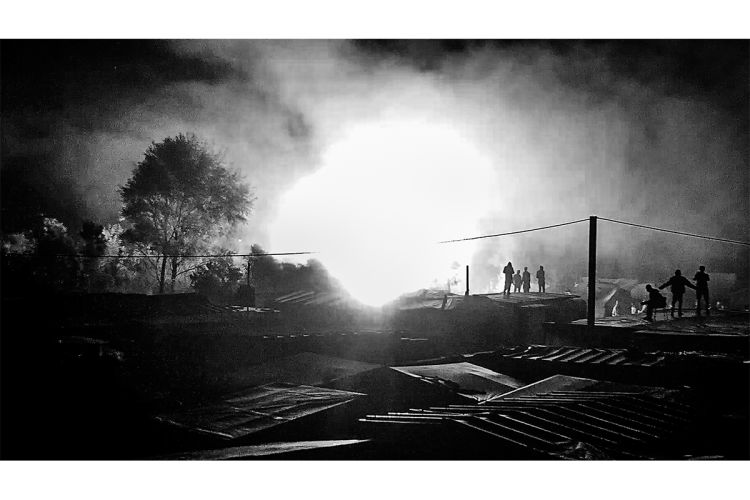
 2017/10/28 | CALAIS00:42:42 – Third Night Of The Jungle Demolition. Smoke From Tear Gas And From An Unidentified Fire Is Mixed. The Sudanese Burning Camp Alerts The Watchmen Of The Other Communities Installed On The Roofs Of The Shacks. Mobile Phones, Walkie Talkies And Fire Extinguishers Are The Tools They Share To Protect Each Other When Firefighters, Ambulances Or Police Officers Are In Short Supply As Chaos Arises.
2017/10/28 | CALAIS00:42:42 – Third Night Of The Jungle Demolition. Smoke From Tear Gas And From An Unidentified Fire Is Mixed. The Sudanese Burning Camp Alerts The Watchmen Of The Other Communities Installed On The Roofs Of The Shacks. Mobile Phones, Walkie Talkies And Fire Extinguishers Are The Tools They Share To Protect Each Other When Firefighters, Ambulances Or Police Officers Are In Short Supply As Chaos Arises. -
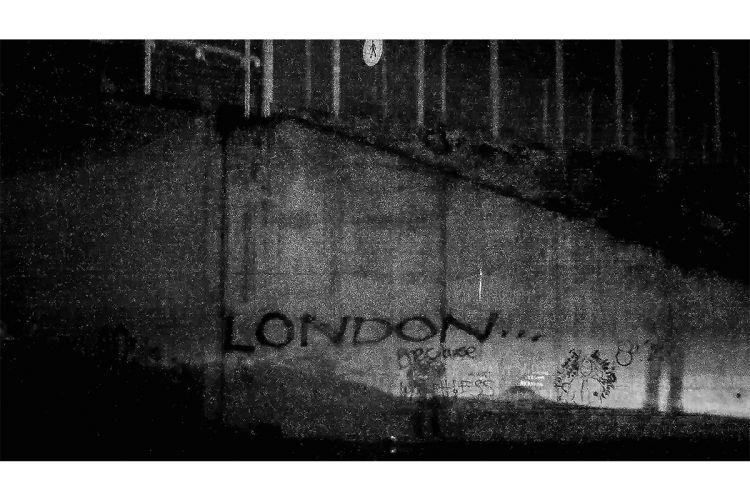
 2016/05/28 | CALAIS04:34:09 – We Return From A Failed Attempt Of Fajara. CRS Trucks Await Us At The East Entrance Of The Jungle Under The Bridge Of The Port Freeway. The Swinging Lighthouse Of The Authorities Lights The Graffiti, Remembering That The Biggest Obstacle To Reach The UK Are Them.
2016/05/28 | CALAIS04:34:09 – We Return From A Failed Attempt Of Fajara. CRS Trucks Await Us At The East Entrance Of The Jungle Under The Bridge Of The Port Freeway. The Swinging Lighthouse Of The Authorities Lights The Graffiti, Remembering That The Biggest Obstacle To Reach The UK Are Them. -
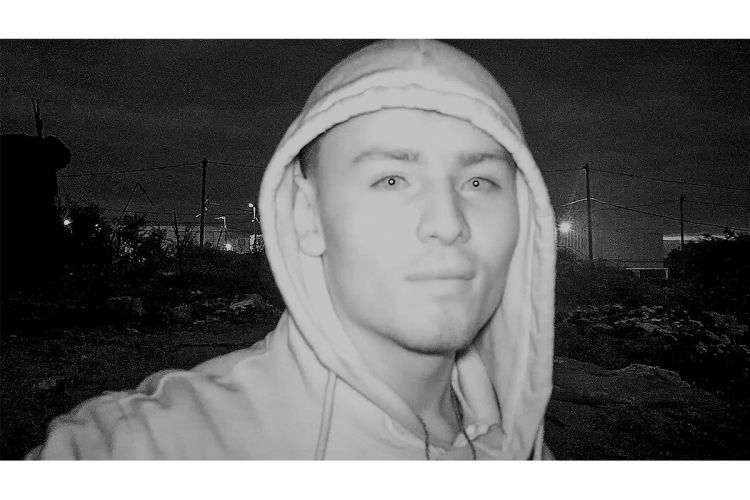
 2016/03/31 | CALAIS19:57:08 – Close-Up Portrait Of An Afghan Child Taken On The Fourth Day Of The Camp Demolition. He Has Just Received His “Bambino” Bracelet For Being A Minor. He Has The Chance Of Being Housed In One Of The 125 Containers Intended To Accommodate Minors In Calais, Until Their Transfer To CAO Orientation Centers. Muhammed Idriss Knows Full Well That He Will Not Be Able To Access England Via Family Reunification. There Is No Family There. Now His Nights In Calais Are Numbered, As Are The Dougars. Today He Will Go Out Looking For One, Like Almost Every Night For The Last 4 Months, Set To Avoid Recycling His Dream.
2016/03/31 | CALAIS19:57:08 – Close-Up Portrait Of An Afghan Child Taken On The Fourth Day Of The Camp Demolition. He Has Just Received His “Bambino” Bracelet For Being A Minor. He Has The Chance Of Being Housed In One Of The 125 Containers Intended To Accommodate Minors In Calais, Until Their Transfer To CAO Orientation Centers. Muhammed Idriss Knows Full Well That He Will Not Be Able To Access England Via Family Reunification. There Is No Family There. Now His Nights In Calais Are Numbered, As Are The Dougars. Today He Will Go Out Looking For One, Like Almost Every Night For The Last 4 Months, Set To Avoid Recycling His Dream. -
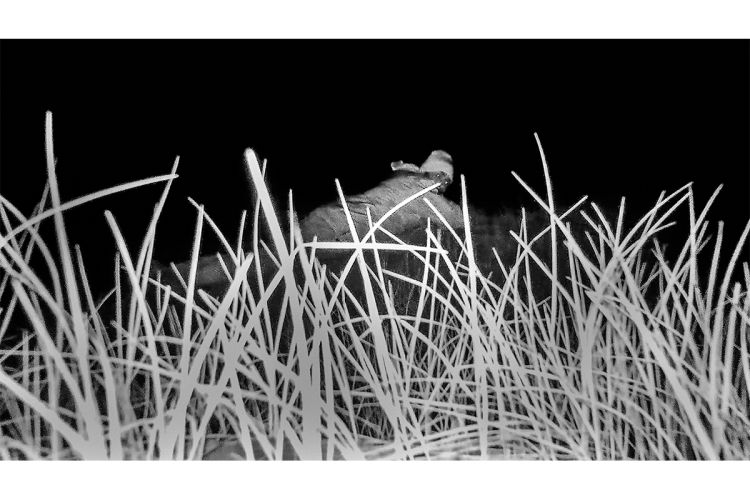
 2016/05/04 | CALAIS04:16:12 – Ahmad Is Lurking Among The Dunes On The Beach Behind The Jungle. He Monitors The Shift Change Of The Agents, Which Happens At 4 Am, In Order To Try To Reach The Port Fences. Here Everything Is Strategy And Patience. Long Waits That Ahmad Distracts By Chatting With His Friends And Close Relatives, Even In Syria: It Is His Way Of Bracing Up And Avoid Going Down.
2016/05/04 | CALAIS04:16:12 – Ahmad Is Lurking Among The Dunes On The Beach Behind The Jungle. He Monitors The Shift Change Of The Agents, Which Happens At 4 Am, In Order To Try To Reach The Port Fences. Here Everything Is Strategy And Patience. Long Waits That Ahmad Distracts By Chatting With His Friends And Close Relatives, Even In Syria: It Is His Way Of Bracing Up And Avoid Going Down. -
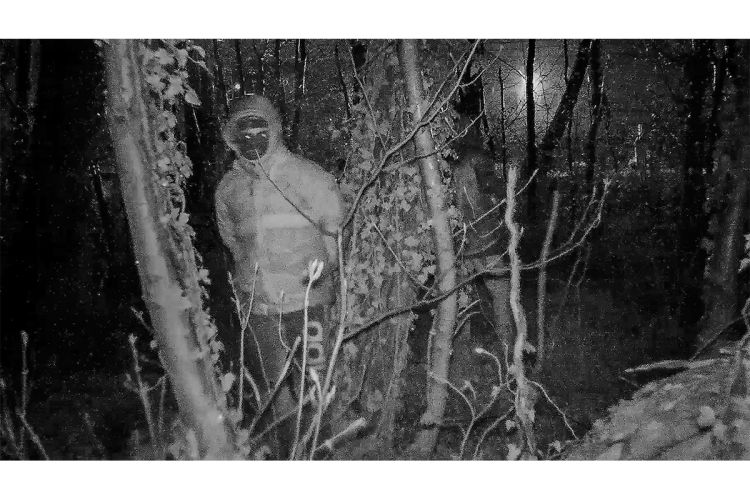
 2016/04/25 | CALAIS01:49:27 – We Hide From The Police In What Used To Be The Ancient Jungle Of Calais, Located 500 Meters From The Current One. The Term “Jungle” Has Been Used For The First Time By Afghan And Iranian Migrants After The Destruction Of Sangatte Camp In 2002. They Took Refuge In This “Jangal”, “Forest” In Persian. Police Patrol Day And Night Uninterruptedly On The Perimeter Of The Jungle. With Their Presence They Try To Dissuade The Inhabitants Of The Camp From Walking Towards The Strategic Crossing Points Of The Eurotunnel, The Motorways Or The Port.
2016/04/25 | CALAIS01:49:27 – We Hide From The Police In What Used To Be The Ancient Jungle Of Calais, Located 500 Meters From The Current One. The Term “Jungle” Has Been Used For The First Time By Afghan And Iranian Migrants After The Destruction Of Sangatte Camp In 2002. They Took Refuge In This “Jangal”, “Forest” In Persian. Police Patrol Day And Night Uninterruptedly On The Perimeter Of The Jungle. With Their Presence They Try To Dissuade The Inhabitants Of The Camp From Walking Towards The Strategic Crossing Points Of The Eurotunnel, The Motorways Or The Port. -
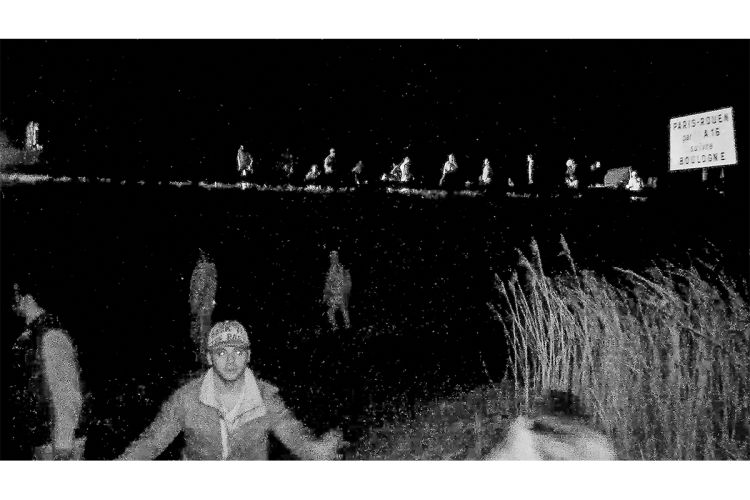
 2016/05/09 | CALAIS01:27:29 – Dougar On The A16 Motorway. Hundreds Of People Of Sudanese, Iraqi, Kurdish, Afghan And Syrian Origin Mount Barricades With Tree Branches To Stop The Trucks Entering The Port Of Calais. This Is The Second Attempt Aborted By Tear Gas And Police Reprisals This Evening. Horns, Shouts Of Truckers Or Refugees And Gas Projections Are The “Night Night” For All. Panic And Confusion Spread. Nights Before A 22-Year-Old Afghan Boy Lost His Life On This Same Segment Of The Motorway Crushed By A Truck.
2016/05/09 | CALAIS01:27:29 – Dougar On The A16 Motorway. Hundreds Of People Of Sudanese, Iraqi, Kurdish, Afghan And Syrian Origin Mount Barricades With Tree Branches To Stop The Trucks Entering The Port Of Calais. This Is The Second Attempt Aborted By Tear Gas And Police Reprisals This Evening. Horns, Shouts Of Truckers Or Refugees And Gas Projections Are The “Night Night” For All. Panic And Confusion Spread. Nights Before A 22-Year-Old Afghan Boy Lost His Life On This Same Segment Of The Motorway Crushed By A Truck. -
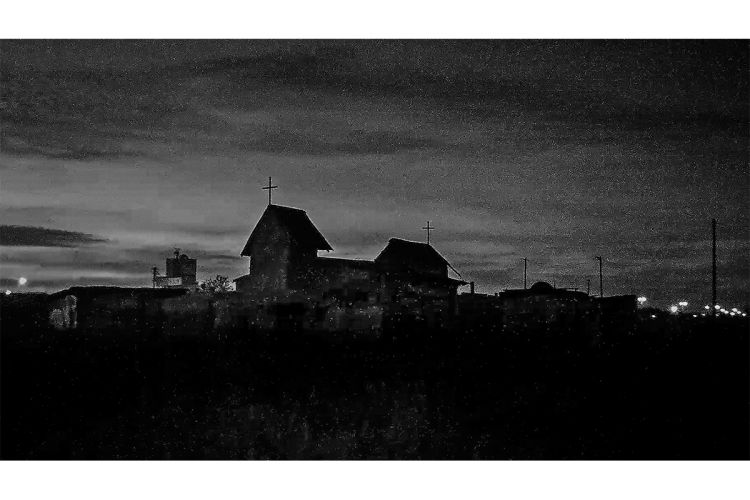
 2016/02/29 | CALAIS17:14:25 – During The Last Breaths Of The Jungle, There Remains Only An Ethiopian Orthodox Church Built In October 2015 And A Mosque. Places Of Worship Were The Essence Of The Jungle, An Escape And A Way To Keep The Faith, Symbol Of Hope. Always Present.
2016/02/29 | CALAIS17:14:25 – During The Last Breaths Of The Jungle, There Remains Only An Ethiopian Orthodox Church Built In October 2015 And A Mosque. Places Of Worship Were The Essence Of The Jungle, An Escape And A Way To Keep The Faith, Symbol Of Hope. Always Present. -
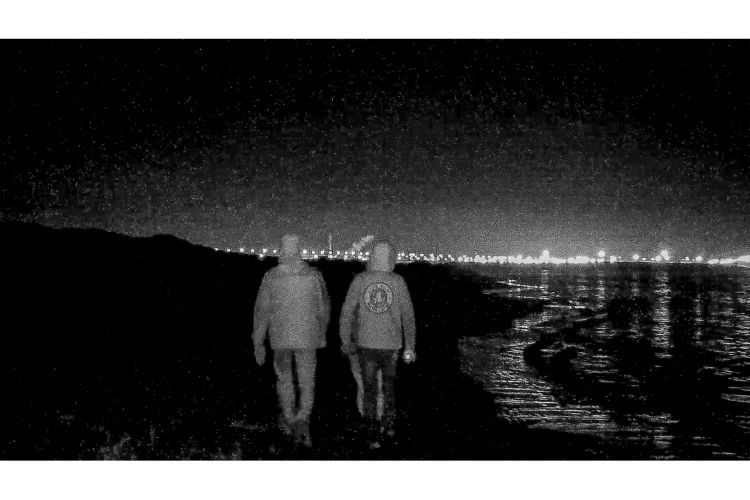
 2016/04/11 | CALAIS03:21:24 – Mohammed And Saleh Walk Steadily On The Shore Of The Beach, Heading To The Port Security Zone. In The Distance The English Coast (Lights, Shapes) Can Be Inferred. All You Have To Do Is Stretch Your Arm To Make This Dream Of Freedom A Reality. 33.30 Kilometers Separate Calais From Dover. Some Of The Inhabitants Of The Jungle Take The Risk Of Attempting To Intrude Swimming On The Port, Equipped With A Neoprene. An Unacceptable Risk If You Take Into Account The Perpetual Traffic In This Maritime Highway Starting On The Port Of Calais.
2016/04/11 | CALAIS03:21:24 – Mohammed And Saleh Walk Steadily On The Shore Of The Beach, Heading To The Port Security Zone. In The Distance The English Coast (Lights, Shapes) Can Be Inferred. All You Have To Do Is Stretch Your Arm To Make This Dream Of Freedom A Reality. 33.30 Kilometers Separate Calais From Dover. Some Of The Inhabitants Of The Jungle Take The Risk Of Attempting To Intrude Swimming On The Port, Equipped With A Neoprene. An Unacceptable Risk If You Take Into Account The Perpetual Traffic In This Maritime Highway Starting On The Port Of Calais. -
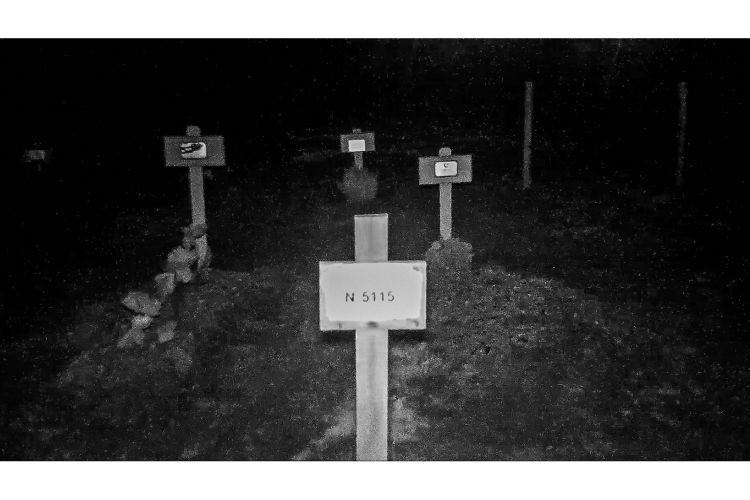
 2016/11/01 | CALAIS19:26:58 – In The Northern Cemetery, 28 East-Facing Tombs Testify To A Frustrated “Fajara”. 28 Migrants Were Found Dead, Trampled On The Motorway Or Electrocuted With The Train Wires After Jumping On It While They Tried To Cross, All This After Falling Of The Truck That Could Have Taken Them To England.
2016/11/01 | CALAIS19:26:58 – In The Northern Cemetery, 28 East-Facing Tombs Testify To A Frustrated “Fajara”. 28 Migrants Were Found Dead, Trampled On The Motorway Or Electrocuted With The Train Wires After Jumping On It While They Tried To Cross, All This After Falling Of The Truck That Could Have Taken Them To England. -
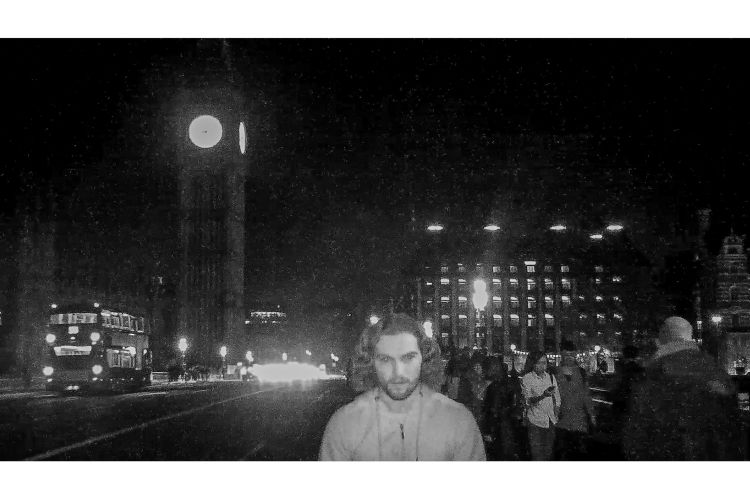
 2016/06/30 | LONDON22:07:50 – On June 30, 2016, Ahmad, A 26-Year-Old From Samarra, Iraq, Finally Arrives In England After Having Spent 12 Months In The Jungle Of Calais Where He Repeatedly Tried To Get “Fajara”. In Early 2017, The British Government Has Rejected His Asylum Claim Because At The Time Of His Departure, Iraq Was Allegedly Not At War. He Wonders Why He Then Had To Flee After Seeing His Two Brothers And His Two Uncles Dead At The Hands Of Militias. Ahmad Now Begins A New Legal Struggle To Get An Identity And A Place To Live And Feel Free.
2016/06/30 | LONDON22:07:50 – On June 30, 2016, Ahmad, A 26-Year-Old From Samarra, Iraq, Finally Arrives In England After Having Spent 12 Months In The Jungle Of Calais Where He Repeatedly Tried To Get “Fajara”. In Early 2017, The British Government Has Rejected His Asylum Claim Because At The Time Of His Departure, Iraq Was Allegedly Not At War. He Wonders Why He Then Had To Flee After Seeing His Two Brothers And His Two Uncles Dead At The Hands Of Militias. Ahmad Now Begins A New Legal Struggle To Get An Identity And A Place To Live And Feel Free.
2016-2017, Calais, France
Fajara to death
Between 2015 and 2016, 10.000 people have passed through the Jungle of Calais, the biggest shantytown in Western Europe. Coming from countries like Sudan, Iraq, Afghanistan and Eritrea they’e fleeing war, persecution, and poverty, and at least 90% of them hope to reach the UK at any price. They want to join their families, enter communities that speak the same language, find favorable asylum conditions, find jobs, or even just work the black market in the British El Dorado.
In 2003 the French port town of Calais became the strategic point of departure for people trying to leave mainland Europe and enter the UK. Crossing the channel through the tunnel is something that people can do on their own, without having to rely on smugglers. Everybody has the same chance at making it through, so when the day ends and night falls, everyone, regardless age, origin, or gender, come together to reach their common goal – “Fajará” ! “Fajará“, in Arabic, means explosion or to blow it up! In the Jungle the word has taken on another meaning and is used by everyone, even none arabic speakers. In the Jungle it means “to arrive at safe port – to Dover”. Each night, inhabitants of the Jungle unite to make “dougar” – which means to build barricades that create traffic jams for the trucks going into the tunnel allowing some of them to jump onto the trailers, and attempt the crossing.
This happens on a regular basis and turning the Calais motorway into a theatre of confrontation with the police and with truck drivers. Mohammed, Ali, Khan, and many others like them constantly face danger and play chicken with death, and there are times when they loose. There are 28 migrants buried in the Calais graveyard, 16 of them died in 2016 alone. Unlike the other graves, theirs are marked by numbers written on a piece of wood and stuck into the ground, without further ado. The same way they died, without further ado.
“Fajará to Death” captures the moments of risk at night, as people try to cross over. Hiding, waiting, attempting to pass, some successful, some not. The images included in “Fajará to Death” were made thanks to the complicity of the migrants with Severine Sajous the photographer, who lived with them in the Jungle for six months, developing a participatory photography project called Jungleye. The images were taken with an infrared camera used for hunting. The aesthetic provided by the camera is reminiscent of surveillance images but this time the camera is accomplice, not watchman. The camera sides with the ones making “dougar”, with the ones doing “fajara”, and it keeps an eye on “abbas”, the name for police in the jargon of the Jungle.
“Fajará to Death” looks at our dark present. The distorted images that Europe projects, offer hope and dreams to many who have had to leave their homes in order to make their life liveable. Caught in the outer seams of Europe, these people are surviving in inhuman conditions, where just being is difficult and where the dead lose their names. The old language doesn’t mean anything anymore and in the Jungle new words are invented to describe their collective condition. “Fajará to Death” is partly an impulse to give back names and show them to the world.